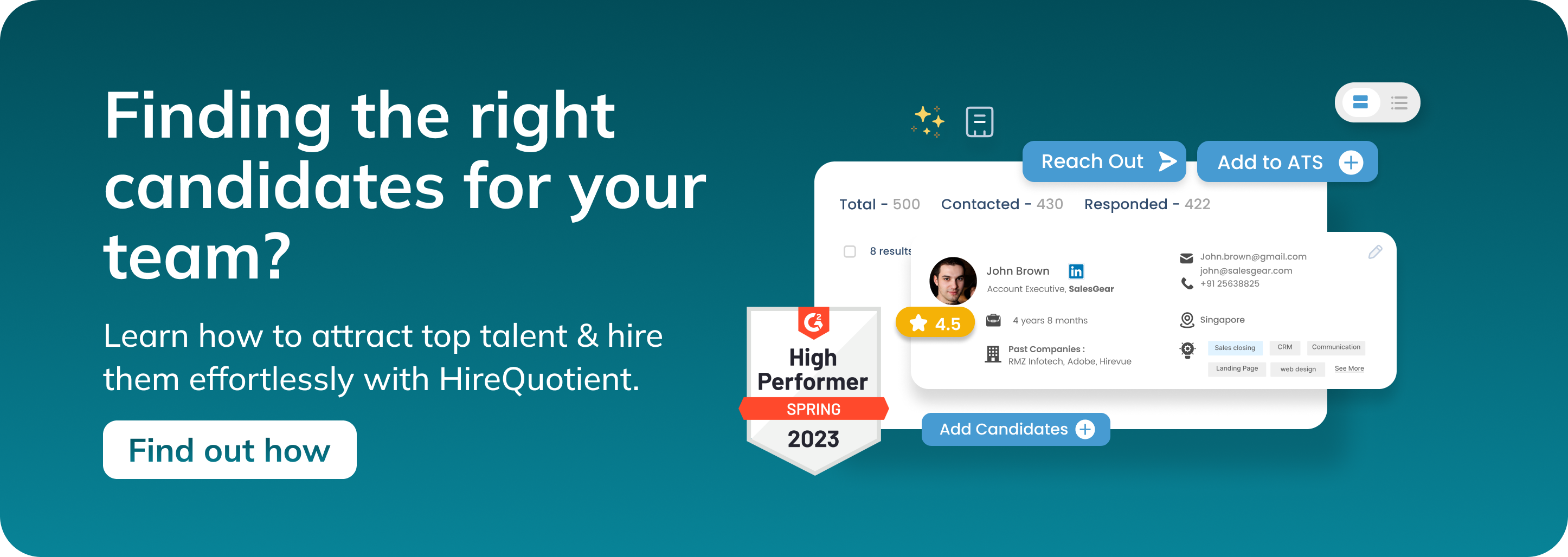Stages of a Recruitment Process - The Ultimate Guide
Published on June 3rd, 2023
Recruitment is a critical process for any organization aiming to attract and select the best talent available. It involves a series of stages designed to identify, evaluate, and ultimately hire the most suitable candidates for a given role. In this ultimate guide, we will explore each stage of the recruitment process in detail, providing valuable insights and tips to ensure a successful hiring outcome.
1. Workforce Planning
Before initiating the recruitment process, it is essential to conduct thorough workforce planning. This involves analyzing the organization's current and future talent needs, understanding job requirements, and determining the desired skills and qualifications for the vacant position.
2. Job Analysis and Job Description
A crucial step in the recruitment process is conducting a comprehensive job analysis. This entails identifying the key responsibilities, tasks, and qualifications necessary for the role. Based on this analysis, a well-crafted job description is created, outlining the job title, duties, required skills, experience, and other relevant details.
3. Sourcing Candidates
In this stage, recruiters utilize various sourcing strategies to attract potential candidates. This can include advertising the job opening on job boards, utilizing social media platforms, attending job fairs, networking, and leveraging professional connections. The goal is to reach a diverse pool of qualified candidates.
4. Resume Screening
Once applications start pouring in, the resume screening process begins. Recruiters review resumes and shortlist candidates who meet the minimum requirements outlined in the job description. This initial screening helps narrow down the candidate pool for further evaluation.
5. Pre-Employment Assessments
To gain a deeper understanding of candidates' skills, aptitude, and cultural fit, pre-employment assessments may be administered. These assessments can include cognitive tests, personality assessments, technical skills evaluations, and situational judgment tests. The results help evaluate candidates objectively and identify those who align best with the organization's needs.
6. Interviews
Interviews play a crucial role in the recruitment process. They provide an opportunity to assess candidates' qualifications, experience, cultural fit, and ability to handle specific job-related scenarios. Interviews can be conducted in various formats, such as phone interviews, one-on-one interviews, panel interviews, or behavioral interviews.
7. Background Checks and References
After identifying potential candidates, conducting thorough background checks and reference checks is essential. Background checks may include verifying employment history, education credentials, criminal records, and professional licenses. Contacting references allows employers to gather insights about candidates' work ethic, skills, and reliability.
8. Decision Making and Offer
Based on the outcomes of the previous stages, recruiters and hiring managers evaluate the candidates and make a final decision. Factors such as qualifications, experience, cultural fit, and interview performance are considered. Once the ideal candidate is identified, a job offer is extended, including details regarding compensation, benefits, start date, and any other relevant terms.
9. Onboarding
The recruitment process does not end with the acceptance of the job offer. Onboarding is a critical step to ensure new hires are integrated smoothly into the organization. It involves introducing the new employee to the company culture, providing necessary training and resources, and helping them understand their role and responsibilities.
Why HireQuotient?
HireQuotient is a comprehensive recruitment automation platform designed to streamline the hiring process. It provides a range of tools to assist recruiters at every stage of hiring.

With HireQuotient, recruiters can effortlessly source, screen, and hire exceptional candidates without encountering any difficulties or inconveniences. The platform includes the following tools:
- JD Generator: The JD generator tool enables recruiters to generate compelling job descriptions with just one click. It is a free tool that simplifies the process of creating job descriptions.
- EasySource: EasySource is the world's first fully automated talent sourcing tool. It allows recruiters to easily locate and engage with relevant candidates. With the integration of ChatGPT, EasySource empowers recruiters to send highly personalized messages to candidates across multiple platforms using automated outreach.
- EasyAssess: This platform provides recruiters with a skills-based assessment tool for efficiently screening candidates for non-technical roles. It offers tailored questions and delivers a comprehensive report at the end of the assessment.
- EasyInterview: EasyInterview eliminates the need to schedule interview appointments with candidates. It is a one-way interview platform that enables recruiters to screen candidates through video interviews at their convenience.
Conclusion
An effective recruitment process is vital for finding and attracting the right talent for your organization. By following these stages, from workforce planning to onboarding, you can streamline your hiring efforts, increase the likelihood of finding qualified candidates, and make informed decisions. Remember, a thorough recruitment process can significantly contribute to the long-term success of your organization.
Related Reads
- Difference between Talent Acquisition and Recruitment
- What is Boolean Search in Recruitment?
- What is a Recruitment Agency?

Hire the best without stress
Ask us how
Never Miss The Updates
We cover all recruitment, talent analytics, L&D, DEI, pre-employment, candidate screening, and hiring tools. Join our force & subscribe now!
Stay On Top Of Everything In HR

